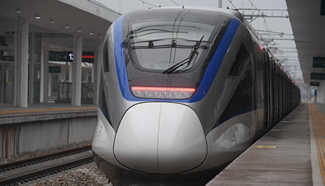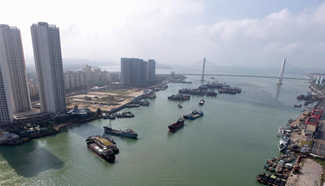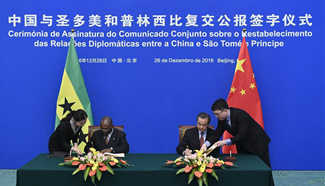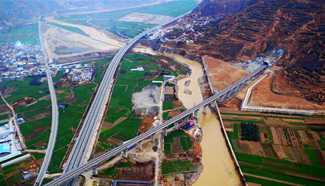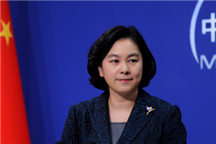BEIJING, Dec. 26 (Xinhua) -- Although China cannot solely lift the world economy out its current malaise, the nation's current stable growth offers more than just confidence to the world.
Despite a troublesome start and headwinds from home and abroad, the Chinese economy ends 2016 on a firm footing, and it looks like growth targets for this year will be met..
"Seeking progress while maintaining stability" is the main theme of next year's economic work, as China pledges to ensure its economy operates within a reasonable range while pushing structural reform.
As the world's second-largest economy and the main source of export demand for over 100 economies, which account for about 80 percent of global GDP according to the IMF, China's commitment to ensuring stable growth is reassuring.
China has long been seen as an engine to shore up global economic growth, a role it played during the global financial crisis, when strong growth here -- backed by a 4 trillion yuan (about 575.9 billion U.S. dollars) stimulus package -- helped avert the worst of a global recession.
It is not crisis time yet, but alarm bells are ringing. IMF Managing Director Christine Lagarde said that not since the early nineties has the world economy been so weak for so long.
Growing uncertainty for the world economy, and geopolitical instability have made China's economic stability particularly significant.
It is true that China has slowed significantly from its double-digit growth rates, but after the transition to what some Chinese leaders have dubbed the "new normal," China still remains the world's major growth engine.
If China's GDP growth reaches 6.7 percent in 2016, in line with the government's official target for the year, China would account for 1.2 percentage points of world GDP growth, according to economist Stephen Roach. With the IMF currently expecting only 3.1 percent global growth this year, China would contribute to over one-third of the world's growth.
Given persistently weak external demand, ongoing deleveraging and capacity-reduction pressure, and a slowing property sector, maintaining stable growth will not be easy for China in 2017.
Unlike some major economies, where policy space is constrained, China policy makers have ample room to boost activity and avoid drastic decline. And unlike other major economies, China's slowdown is to some extent a desired outcome of reforms designed to transform the economy. China is moving from an export-and-investment-driven economy to one that is more sustainable and draws strength from consumption, services and innovation.
Through structural reform, China's transition is capable of addressing both short-term cyclical pressures and longer-term issues. Its successful rebalancing will greatly benefit the world.
Expanding domestic demand from China will become an increasingly important source of export-led growth for China's major trade partners, provided that those countries grant open access to growing Chinese markets.
China has worked hard to assume responsibility as a regional and global economic power, putting forward a series of initiatives to encourage regional economic integration and cooperation. High on the list are the Asian Infrastructure Investment Bank and the Belt and Road Initiative. The Regional Comprehensive Economic Partnership is also gaining momentum.
Under such circumstances, a weak and vulnerable world economy needs China more than ever.

